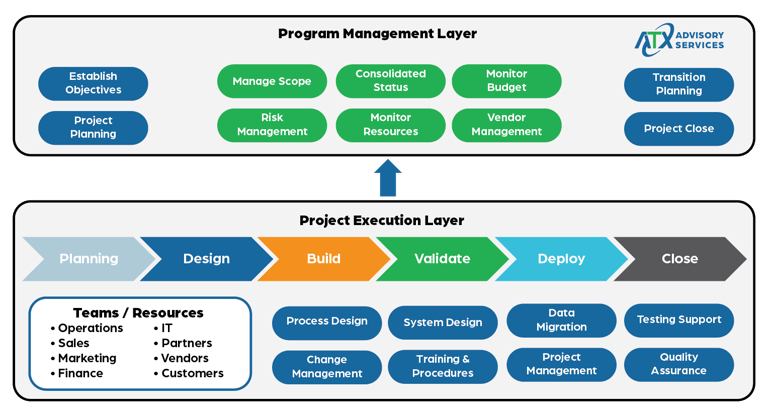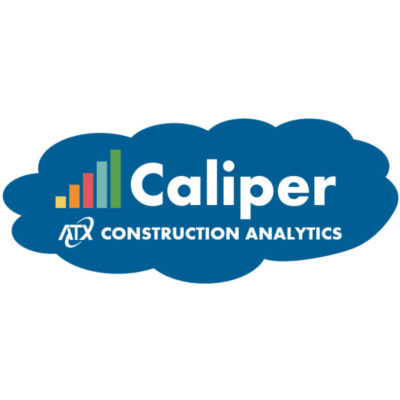But with the proper planning and the right leadership, this doesn’t have to be the case. If you put the time in upfront to plan properly, your ERP implementations can come in under budget and be less time-consuming for all involved.
In this article, we provide insights into why ERP deployments fail. We also outline the key steps you can take to plan for a successful implementation that delivers the ROI your business is looking for.

Difficult to Get Internal Resources to Focus
You must have the proper implementation team and appropriate resources for your ERP project—both in terms of expertise and bandwidth. You do not want to go into the implementation with insufficient internal resources. Achieving an ERP implementation is nearly impossible if resources are too busy with their day-to-day responsibilities.
One of the reasons implementations fail, go over budget, or take too long is that some companies think they can do it all themselves without any outside help. Even if this turns out to be the case, this approach places a major strain on internal resources. Because the resources also need to stay dedicated to their daily duties to keep the organization operating properly, they simply don’t have the mental energy to focus on the ERP implementation.
The inverse is also true here. Organizations often get busy or don’t dedicate enough internal support to the project. This can lead to process gaps or the lack of proper system testing—often due to the absence of basic system knowledge and experience. It is critical to align a strong internal project team with the proper level of external expertise to keep the project on track.
Set Clear and Realistic Goals
So what makes for a successful ERP deployment? First, clearly state all the objectives and goals. And make sure they’re realistic. Budgets and timelines must also be realistic. If you have not already been through an enterprise application implementation, the objective along with the goals, budgets and timelines can be challenging to nail down.
Also, be sure to assign a strong project manager. This person should be experienced in software implementations and be able to manage all resources and vendors. The project manager must drive tasks to completion, deliver status updates, and keep the executive leadership team informed on overall project concerns, budgets, and timelines.
Putting Your Team Together
At this point, you should have clearly defined all the elements of your ERP implementation. Set realistic expectations—you don’t want goals and objectives that can’t be met and will make the project fail no matter what you do. This also helps all parties involved with the implementation to deliver and configure the appropriate functionality that addresses all the required business needs.
Before starting the implementation, hold a kick-off meeting with all parties to set expectations. This part of the project sets the stage for the rest of the implementation. Discuss the background of the project while clearly covering the scope and laying out the objectives.
In addition to the delivery team you put together, identify each person’s role and responsibilities, and define how the project team will work together. It’s imperative to identify key stakeholders and decision-makers as strong executive sponsorship and buy-in are critical. Leadership must commit to the ERP platform. If they lead the way, others will follow. HOLD PEOPLE ACCOUNTABLE.
Organizational Change-Management Plays Key Role
 As you can imagine, you need everyone to buy into the ERP project—from the top down within the organization. Many companies make the mistake of identifying an implementation as an IT project, but it is much more than that. It’s a decision that affects the whole company. This makes it vital to get people involved from every department, which makes sense considering that replacing an ERP application is a huge change—not only operationally but also culturally.
As you can imagine, you need everyone to buy into the ERP project—from the top down within the organization. Many companies make the mistake of identifying an implementation as an IT project, but it is much more than that. It’s a decision that affects the whole company. This makes it vital to get people involved from every department, which makes sense considering that replacing an ERP application is a huge change—not only operationally but also culturally.
A key tool to assist with operational and culture changes is Organizational Change Management (OCM). By implementing an OCM plan and facilitating OCM activities as a constant throughout the implementation, you benefit from a framework for managing the effect of new business processes, changes in organizational structure, and cultural changes within the company.
A systematic approach to OCM is particularly beneficial when change requires people throughout the organization to learn new behaviors and skills. OCM is the collective term for all approaches to prepare, support, and help individuals, teams, and organizations in making organizational change. The process includes everything from project communications to end-user buy-in, training, user-acceptance testing, and end-user adoption activities.
Ultimately, OCM sets the stage for success!
Tips to Ensure ERP Implementation Success
As you develop your plan to implement a new ERP solution, here are some additional tips to keep you on the right path:
- Create and monitor the project plan – adjust dates and update the percentage of the project you have completed as you go
- Test, test and then test again—based on your internal business processes—and then adjust accordingly to make sure the software works before you roll it out to end-users. If the software doesn’t function properly, end-users will lose faith in the application. And if you lose their buy-in, they won’t leverage the ERP software to its fullest extent, and your ROI will decrease.
- Closely track and maintain an open issues log. Be sure items are closed out.
- Hold regularly scheduled status calls to discuss any road-blocks throughout the implementation.
- Schedule executive level steering calls to discuss the implementation from a high level—timelines and budgets
- Recruit people with different experience levels and skill sets to be involved in the implementation. This also brings different personalities to manage properly, which should begin on day one and continue through the duration of the implementation.
- Involve end-users and key stakeholders in discussions when making important decisions. Make everyone feel involved.
- Training is equally important—involve anyone who will use the software. Properly-trained employees feel comfortable upon go-live.
- Devise a cutover plan that identifies all the details and processes. This leads to a successful implementation and a smooth go-live process.
Also develop a post-implementation plan. It should include support and the appropriate contacts when encountering issues. With a plan to address issues, you will ease end-user anxiety.
Looking Back…and Ahead
After the implementation, look back to determine if all your objectives established at the beginning of the project were met. Any that you missed the mark on could be earmarked as objectives for phase two of your implementation.
Future phases are something to think of you as you go through the implementation. Like all enterprise applications, an ERP platform is not something you can deploy once and then forget about it. Just as your business will continue to grow and change, so too must your ERP platform to help you keep your business operating efficiently.
For more information on how ATX can help your business implement a new ERP platform, visit our technology consulting web page. You can also learn more about our solutions by reaching out to me at tom.ilic@atxadvisory.com




